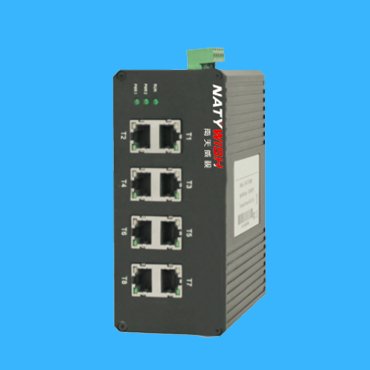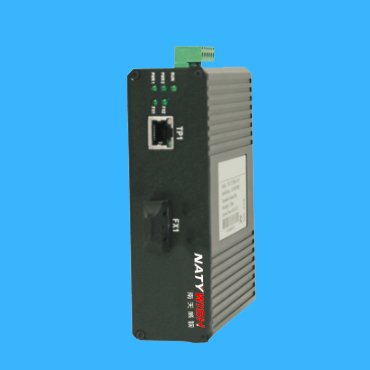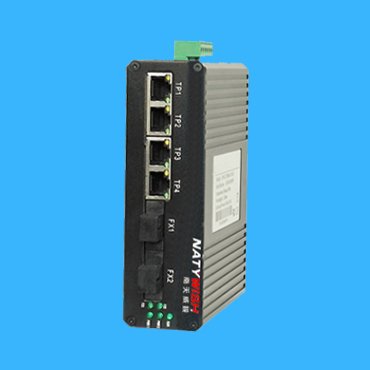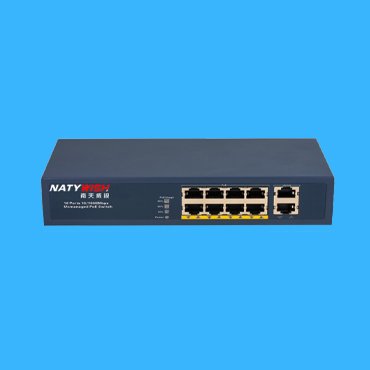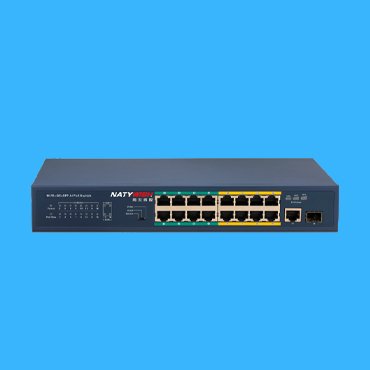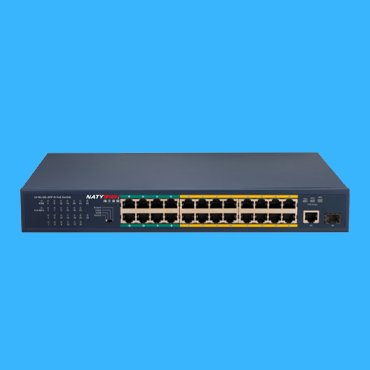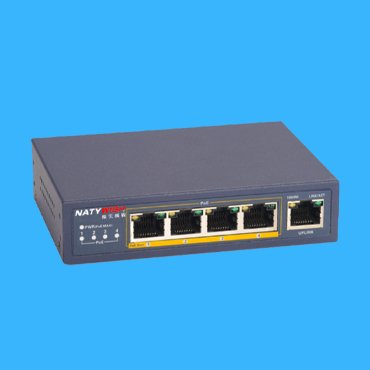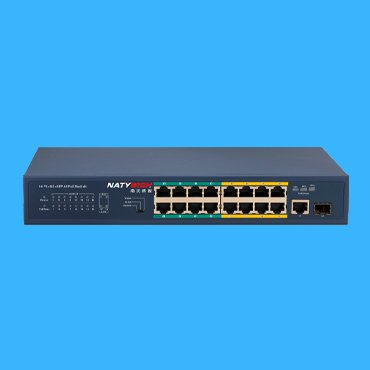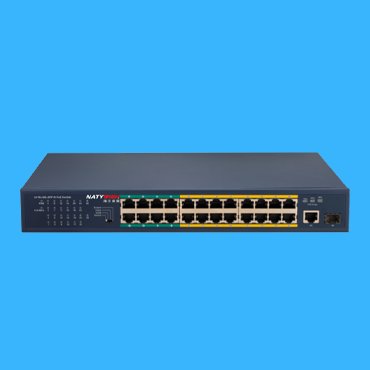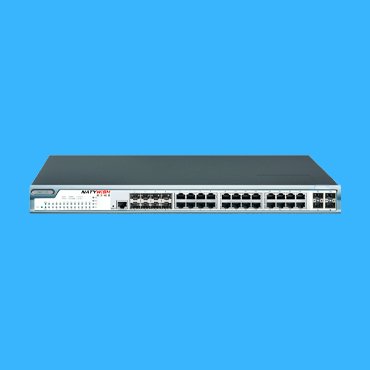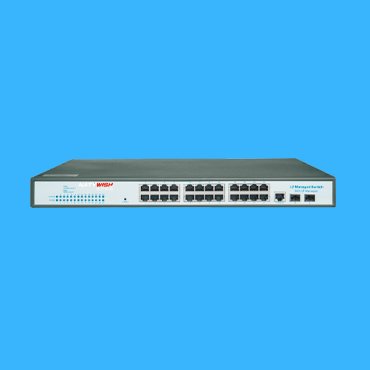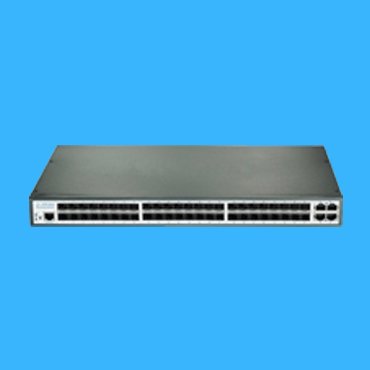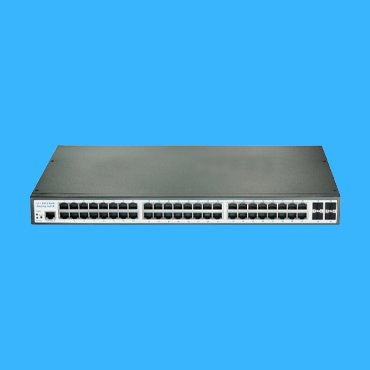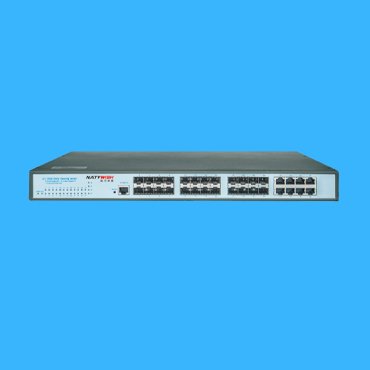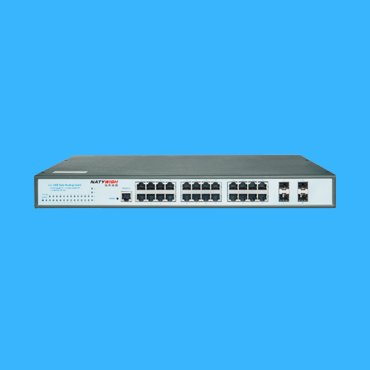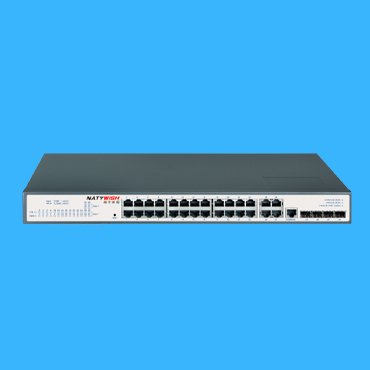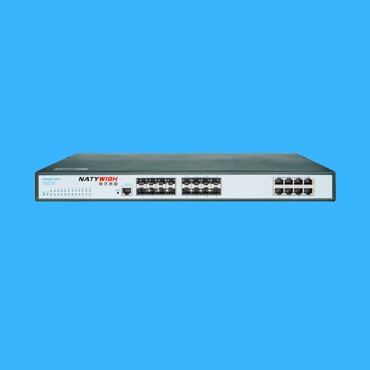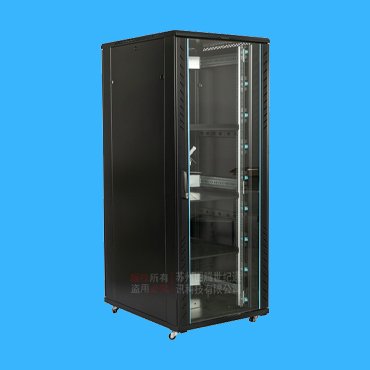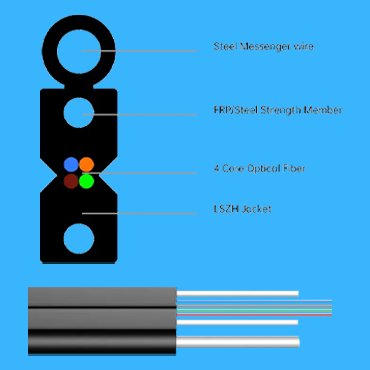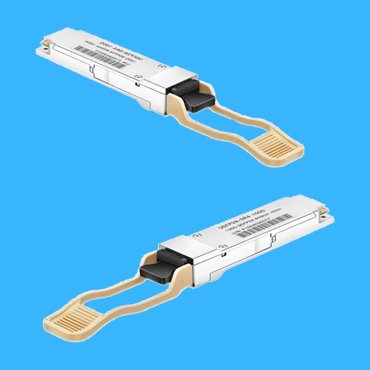Your Best Network Switch Supplier in China since 2000
Being a leading manufacturer of network switch over 15 years, plus SFP modules, fiber patch cord cable and UTP CAT5e & CAT6 cable, we are dedicated to offer a package supply & solution for your different applications, including:
- Data Centers & FTTX projects
- Schools, Hospitals and Commercial buildings
- Transport system,like airport, harbors,railways & underground
- Power transmission & distribution substations, solar & wind farms
- Industrial applications, like steel factories, paper & cement factories, coal, gas & oil plants
What is a Network Switch
Network switch is a telecommunication device to expand the network, which can provide more connection ports in the subnet to connect more computers or some others communication equipment. With the development of the communication industry and the promotion of the informatization , the network switch market is steadily rising. It is of high flexibility, relatively simple and easy to implement. Ethernet technology & Ethernet switch has become the most important & poular LAN networking. Ethernet switch types are including, Home/Business switch, PoE switch and some ethernet switch for industrial applications.
PowerTel & its associated factory can offer you a wide variety of network switch to expand your network. Please contact our engineers for a proper type of newtwork switch to fit your needs, togeth with SFP modules, fiber patch cord cable, and UTP CAT5e & CAT 6 copper cables etc.
Industry-class Network Switch
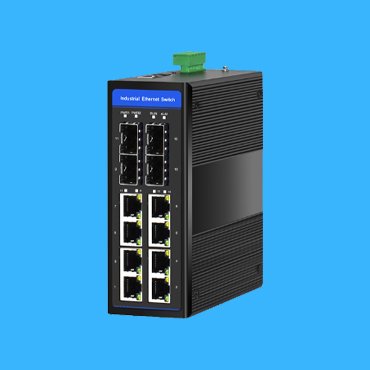
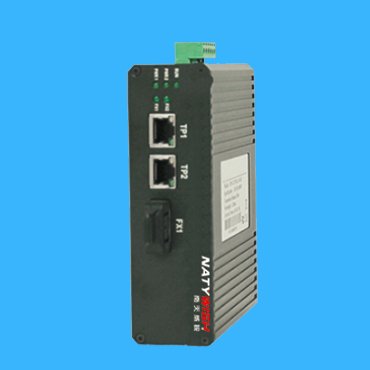
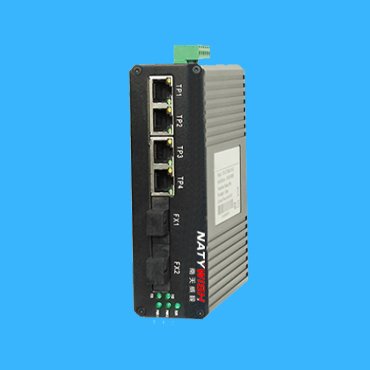
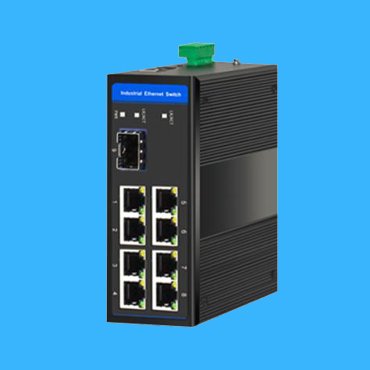
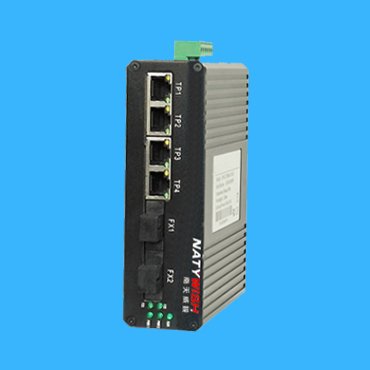
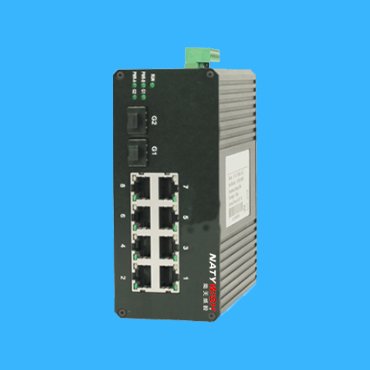
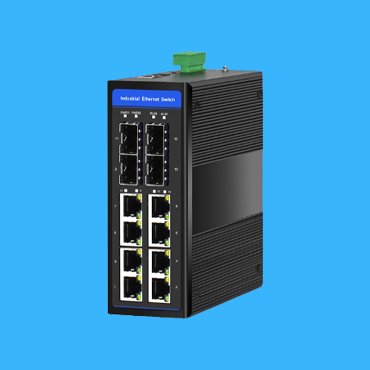
PoE Network Switch
Network Switch for Industrial Applications
Product Feature Box





Continous R & D
Continous R & D makes keep pace with the fast development of telecommunications technology. Our team of experts is constantly looking for new ways to improve our products and services, so that you can have the most advanced and reliable ethernet switch for your network.


Tailored Design & Package Supply
Based on experience of our dedicated engineers, they will work together to figure out an ideal combination of different types of telecommunication equipment to build up your new network or upgrade your existing network at a lowest cost while ensuring a high efficiency & reliability.
Production Line for Network Switch
ISO certificated factories, with an annual productipn capacity of over 300,000 sets of different types of ethernet switch; this made us have a fast shipping for your ordered products.

Related Product
Characteristics of a Network Switch
With the continuous decline in hardware costs, network switches have been widely used as the main connecting device for local area networks. Its main characteristics are as follows:
- From the perspective of OSI architecture
Ordinary Ethernet switches are devices on the data link layer. They not only synchronize, amplify and shape data transmission, but also filter short frames, fragments, etc. during data transmission, without packet dropping, transmission delay, etc., to ensure the correctness of data transmission.
- From the perspective of working methods
The network switch detects a packet sent from a certain port, searches the “Port Address” table inside the switch based on its target address, finds the corresponding target port, opens the data channel between the source and target ports, and sends the packet to the corresponding target port. When different source ports send information to different target ports, switches can simultaneously transmit these packets without affecting each other, prevent transmission collisions, isolate conflict domains, effectively suppress broadcast storms, and improve the actual throughput of the network.
- From a bandwidth perspective
Each port on the network switch has exclusive bandwidth, and for a switch with 12 ports of 10M, the total bandwidth is 12 * 10=120M. The switch also supports full duplex.
- From a maintenance perspective
The maintenance of regular network switch is relatively simple. By using the indicator lights on the switch, it is possible to determine which computer network cards or cables are faulty and troubleshoot them.
Types of network switch
- In a broad sense
Network switch can be divided into two categories: LAN switches and WAN switches.
WAN switches are mainly used in national, provincial, and municipal backbone transmission networks, providing communication infrastructure platforms such as ATM (Asynchronous Transmission Mode), SDH (Synchronous Digital Fiber Optic Network), ADSL (Asymmetric Digital User Loop), ISDN (Integrated Services Digital Network), HCF (Hybrid Fiber Coaxial Cable), and other switches. LAN switches can be divided into Ethernet switches, Fast Ethernet switches, Gigabit Ethernet switches, token ring switches, FDDI switches and ATM switches according to the different network technologies used.
- From the perspective of application fields
It can be divided into desktop switches, workgroup switches, backbone switches, enterprise switches, segmented switches, port switches, network switches, etc.
- From the perspective of appearance and function
It can be divided into: rack mounted switches (also known as modular switches, which can be inserted with expansion switch modules and routing switch modules), fixed configuration switches with expansion slots (fixed port count and a small number of expansion slots), and fixed configuration switches without expansion slots (only supports one type of network).
Switching Technology
- Port switching
In the early days, port switching technology appeared in slot based HUBs, where the backplane of these HUBs was divided into multiple Ethernet segments, each of which was a broadcast domain. If no bridge or routing connection was used, they would not be interconnected with each other. After inserting the Ethernet main module, it is assigned to a network segment on a certain backplane, and port switching allocates and balances the ports of the Ethernet module among multiple network segments on the backplane. According to the level of support, port switching can also be subdivided into:
(1) Module exchange: Migrate the entire module into network segments.
(2) Port group switching: Usually, the ports on the module are divided into several groups, and each group of ports allows for network segment migration.
(3) Port level switching: supports migration of each port between different network segments. This switching technology is based on the OSI physical layer and has high flexibility and load balancing capabilities. As long as the configuration is reasonable, it can still be fault-tolerant, but it cannot change the characteristics of the shared transmission medium, which cannot be essentially called switching.
- Frame exchange
The most widely used LAN switching technology currently is frame switching, which segments the transmission medium, provides a parallel transmission mechanism, reduces conflict domains, and achieves high bandwidth. There are two ways to exchange frames:
(1) Through switching method: providing line speed processing capability, the switch first reads the first 14 bytes of the frame (7 bytes of preamble, 1 byte of frame header, and 6 bytes of target address), obtains the target address, finds the corresponding port address, and directs the entire frame to the output port. Avoiding the consumption of time for frame serial parallel and parallel serial conversion and caching in the storage and forwarding switching method.
(2) Storage and forwarding method: The source computer transmits frames from the input port to the switch, first “transitioning from serial to parallel”, performs the first data verification, and temporarily stores the entire frame in the cache of that port. After finding the output port number, forward the frame to the cache of the output port, and then output it to the target computer “in parallel to string”, and perform a second data verification.
It is obvious that the through switching method has a fast switching speed, but lacks frame control and error verification, which sacrifices reliability and does not support port switching at different rates. The storage and forwarding method is slow but highly reliable. Some switch products use through switching as the default switching method. If the link reliability is poor or there are too many frame fragments, the switch will automatically switch from the default through switching mode to the store forward switching mode to achieve maximum work efficiency.
We even decompose frames into fixed size cells, which are easy to implement in hardware, have fast processing speed, and can perform advanced control functions.
- Cell exchange
ATM technology represents the future development direction of network and communication technology, and is also a “good medicine” to solve many problems in current network communication. ATM uses a fixed length of 53 bytes for cell switching. Due to its fixed length, it is easy to implement with hardware. ATM adopts dedicated non differential connections and runs in parallel. Through a switch, multiple nodes can be established simultaneously without affecting the communication capability between each node. ATM also allows for the establishment of multiple virtual links between the source and target nodes to ensure sufficient bandwidth and fault tolerance. ATM uses statistical time division circuits for multiplexing, greatly improving channel utilization. The bandwidth of ATM can reach 25M, 155M, 622M, or even several gigabytes of transmission capacity.
Selection of a Network Switch
The level of switch technical indicators is an important basis for device selection. Here, we mainly introduce the main indicators closely related to switch performance and device selection, such as backplane bandwidth, packet forwarding rate, port type, port speed, port density, redundant modules, stacking capacity, VLAN number, MAC address number, and three-layer switching capacity.
- Backplane bandwidth
The backplane bandwidth is the maximum amount of data that can be throughput between the switch interface processor or switching module and the data backplane bus. It represents the total throughput capacity of a switch. Usually, the backplane bandwidth (in full duplex mode) is at least equal to “number of ports * port rate * 2”.
- Packet forwarding rate
Packet forwarding rate refers to the number of data packets forwarded per second, measured in Mpps (millions of packets per second). Usually ranging from a few Mpps to a few hundred Mpps.
- Port Type
The port type refers to whether the port on the switch is Ethernet, token ring, FDDI or ATM. Fixed port switches only have a single type of port. Medium and high-end modular switches provide modules of different media types to interconnect Ethernet, token ring, FDDI, etc.
- Port rate
Port rate refers to the bandwidth provided by a switch port to data resource devices exclusively, reflecting the ability of the switch port to handle how many data packets per second. Usually there are 10Mbit/s, 100Mbit/s, 10/100Mbit/s adaptive, 1000Mbit/s, and 10Gbit/s.
- Port density
It refers to the maximum number of ports supported by a switch. The port density is calculated when all module slots are filled with modules. The port density values vary depending on the module selected.
- Can it be connected through fiber optical cable
If optical fiber must be selected in the wiring, it is necessary to choose a fiber optic interface switch (with a higher price), install a fiber optic module, or install a twisted pair and fiber optic repeater.
- Redundant modules
Redundant modules are used on modular switches to improve device fault tolerance and avoid system crashes caused by module failures. The commonly used redundant modules include the super engine module, switching matrix module, and power module, all of which are important modules that affect the normal operation of the system.
- Stacking ability
Stacking ability includes two important indicators: bandwidth and number of layers stacked. Only switches of the same type can be stacked together. Different types of switches have different stacking ports, cables, and protocols, and can only be cascaded, not stacked. There are two stacking connection methods, one is to lead cables from the stacking module in the center of the stacking matrix to each switch (with a bandwidth of about a few Gbit/s), and the other is to connect switches to each other (with a bandwidth of about 1Gbit/s). The number of stacked layers varies from 4 to 9.
- Number of VLANs
Consider the support capability and quantity for VLANs. Currently, most network switches support more than 1000 VLANs.
- Number of MAC addresses
The number of MAC addresses refers to the maximum number of MAC addresses that can be stored in the CAM table of a switch. The more MAC addresses are stored, the faster and more efficient data forwarding is. The value of this indicator is usually in the range of thousands to tens of thousands.
- Three layer switching capability
The three-layer switching capability refers to: Can the three-layer packet forwarding rate achieve line speed three-layer switching (with the same switching rate as two-layer switching). There are other indicators of the network switch, such as CPU frequency, latency, mean time between failures, cache type, and buffer size, which will not be explained here. If necessary, please refer to the relevant manual.
Precautions for using network switch
- Try to choose switches of the same brand as much as possible
For a newly built network project, try to choose switches of the same brand as much as possible and avoid selecting products from different manufacturers to avoid trouble during after-sales installation and debugging.
When upgrading and renovating the original project, only switches that are different from the original equipment can be selected, and compatibility between new and old equipment must be considered.
- The switching system and wiring system should match each other structurally
The wiring system and switching system should be structurally consistent, and attention should be paid to factors such as the distribution of wiring rooms, vertical cable types, and the distance between the wiring room and the central computer room. Reasonably select the wiring structure and medium, and select the matching switching structure and switching equipment.
- The switching system should have scalability
When designing a switching system, the first step should be to meet current needs, but it does not mean that there is a wiring information point that provides a switch port to match it. Because according to the “full wiring principle”, some information points that are not currently in use have been laid out, and there is currently no requirement for these points to be connected to the local area network. When wiring, more information points are usually arranged. When configuring a switch, it is necessary to first meet the number of ports for the information points and leave a slight margin, so that other information points can be directly connected in the future. Expandable switches or box switches should be configured with empty slots for easy expansion.
- Connection method between switch and server
In a client/server mode switch network, multiple workstations will access the server simultaneously. So important servers should be directly connected to the core switch, usually using gigabit rates, so the switch must be equipped with gigabit ports. If redundant servers or switches are used, each server should be equipped with dual network cards that are connected to two core switches.
consectetur adipiscing elit, sed do eiusmod tempor incididunt ut labore et dolore magna aliqua. Quis ipsum suspendisse ultrices gravida. Risus commodo viverra maecenas accumsan lacus vel facilisis.

